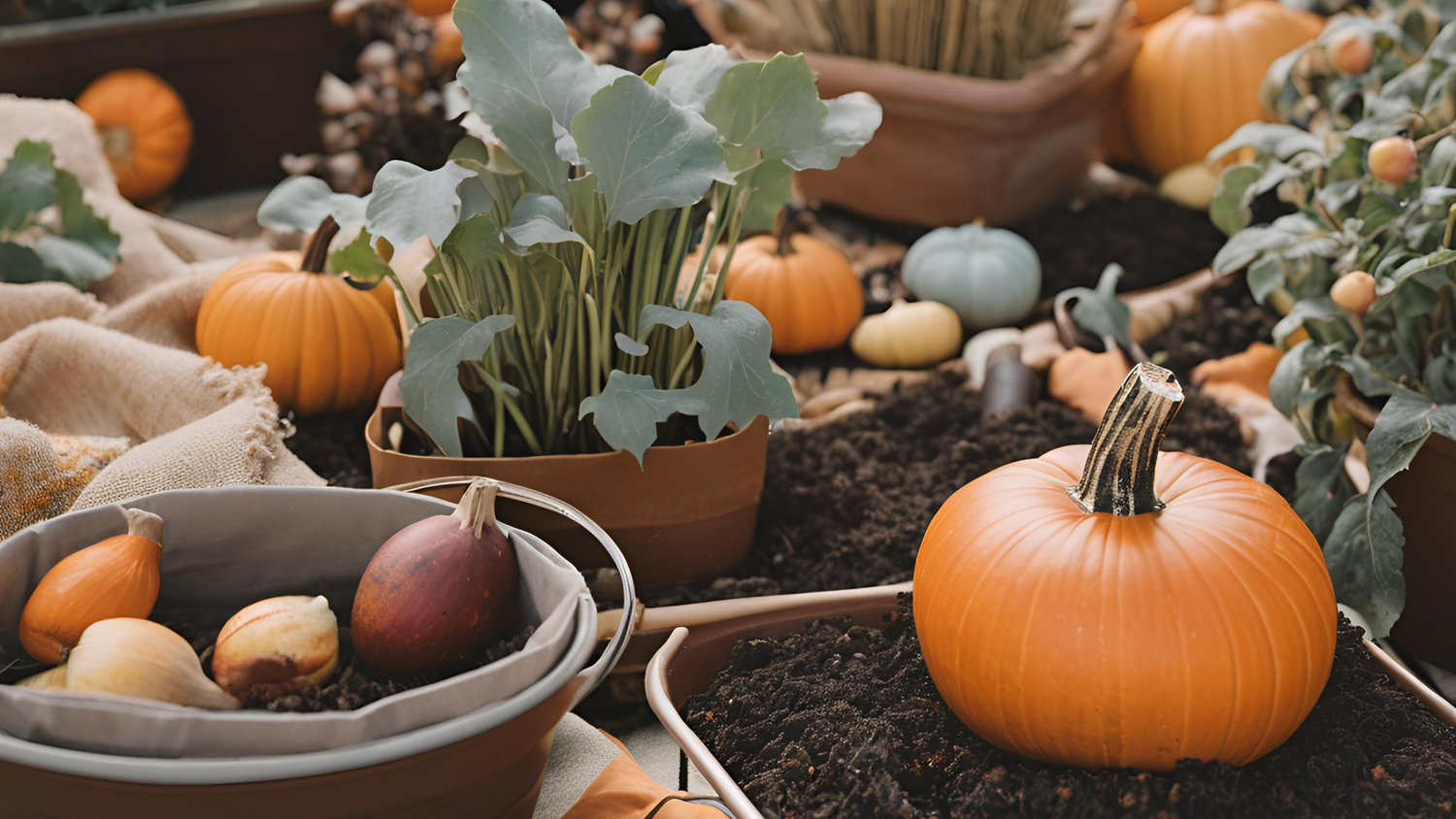As the vibrant colors of summer begin to fade, signaling the arrival of autumn, it’s time for gardeners to shift their focus toward fall gardening tasks. Proper autumn garden care ensures a vibrant and thriving garden as the seasons change. With the right spring garden preparation, the groundwork laid in the cooler months can lead to a burst of life when the warmer weather returns. This extensive guide'll delve into the top 10 essential fall gardening tasks to ensure your garden remains healthy and poised for flourishing in the spring.
1. Clean Up Dead Foliage
One of the first steps in fall garden care is removing dead leaves and plant matter from your garden beds. This action doesn't just keep your garden looking tidy—it also helps prevent the spread of diseases and pests that can overwinter in the debris. However, while cleaning, consider leaving some areas of leaves and dead plant stems undisturbed in corners of your garden to provide shelter for beneficial wildlife and insects over the colder months.
2. Plant Spring Bulbs
One of the most crucial spring garden preparation tasks is planting bulbs. Autumn is the perfect time to plant spring-flowering bulbs like tulips, daffodils, and hyacinths. These bulbs need a period of cold dormancy to bloom brightly come spring. Planting depths and spacing are critical, so refer to the guidelines specific to each type of bulb you choose to ensure they have the best start.
3. Enrich the Soil
After a busy growing season, your garden's soil will have expended much of its nutrient content. Fall is the ideal time to replenish your soil by adding organic matter. Apply a layer of well-rotted compost or manure to your garden beds. This will slowly break down over the winter months, enriching the soil with vital nutrients and leading to stronger, more robust plants in the spring.
4. Protect Perennials
While many perennials are hardy, protecting them from the harshest winter conditions can ensure they return with vigor come spring. Cutting back dead foliage and mulching around the base of the plants can provide extra insulation against cold temperatures and frost heave. Remember, though, that some perennials prefer their foliage to be left intact over winter, so it’s best to research the specific needs of each plant in your garden.
5. Divide and Transplant Perennials
Autumn is also an ideal time to divide and transplant perennials that have become overcrowded. This rejuvenates existing plants, allowing them room to grow, and provides you with additional plants to expand your garden or share with fellow gardening enthusiasts. Keep the transplanted perennials well-watered until the ground freezes to help them establish.
6. Lawn Care
Fall lawn care is crucial for a healthy lawn come spring. Aerate your lawn to improve drainage and relieve compaction. Following aeration, apply a top dressing of compost and overseed to encourage dense growth, paying special attention to areas that appear thin or bare. Lastly, a fall application of fertilizer can help support root growth throughout the winter.
7. Harvest and Preserve

Don’t forget your vegetable garden. Harvest remaining crops before the first frost hits, and if feasible, consider planting a cover crop like clover or winter rye. These crops can be tilled into the soil come spring, adding organic matter and nutrients, which improves soil structure and fertility.
8. Prepare Your Tools and Workspace
Gardening tools and equipment require care to ensure their longevity. Clean, sharpen, and oil your gardening tools, and store them in a dry place. It’s also a good time to clean and organize pots, stakes, and garden ornaments. Taking the time for these tasks now can make spring garden preparation smoother and more enjoyable.
9. Plant Trees and Shrubs
The cooler temperatures of fall are perfect for planting trees and shrubs. The warm soil allows for root growth before the ground freezes, and the cooler air temperatures reduce stress on the new plantings, giving them a stronger start. Water these new additions well and mulch around the base to conserve moisture and regulate soil temperature.
10. Watering and Mulching
Despite the cooler weather, it's important to continue watering, especially new plantings and evergreens, until the ground freezes. This ensures plants are well-hydrated going into the winter, reducing the risk of desiccation and stress. Applying a layer of mulch around plants but not touching their stems can help maintain soil moisture and temperature, protecting roots from freezing and thawing cycles.
Final Thoughts
As the vibrant colors of autumn begin to emerge, signaling the transition from the current gardening season to the next, it's essential to focus on a range of tasks that will set the stage for a bountiful and thriving garden in the spring. Gardeners can take this opportunity to engage in various important fall gardening tasks by embracing the cooler temperatures and the changing landscape. From meticulously enriching the soil with organic matter and essential nutrients to strategically planting a diverse array of spring bulbs, each action serves as a crucial building block for a flourishing garden in the upcoming season. This period of preparation not only ensures the future vitality of the garden but also provides a valuable opportunity for reflection and meticulous planning. As the natural world undergoes its seasonal transformation, it's important to approach this time as an opportunity for growth and readiness so that the garden may burst into life again with boundless energy and beauty when spring arrives.





Leave a comment
This site is protected by hCaptcha and the hCaptcha Privacy Policy and Terms of Service apply.